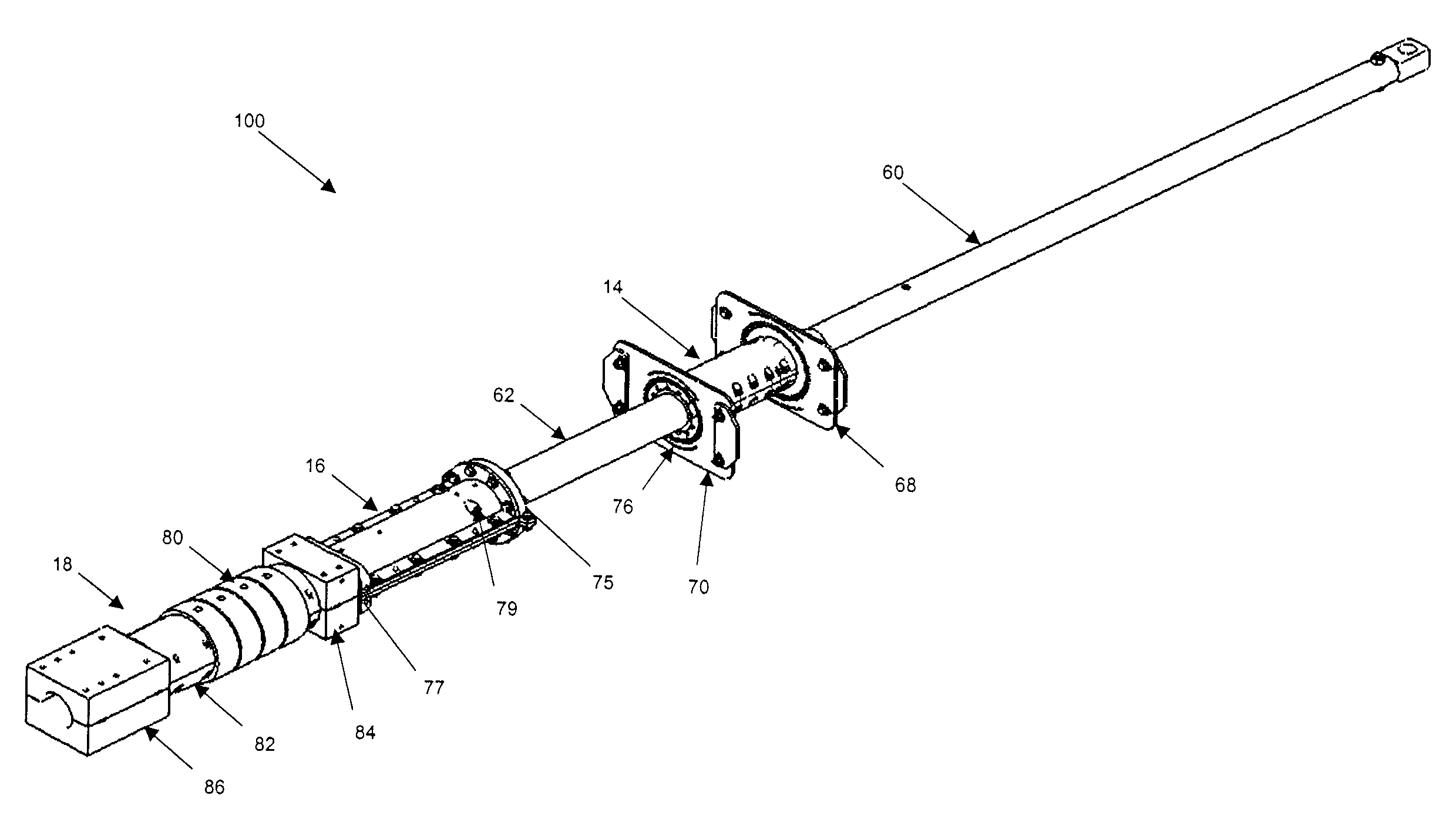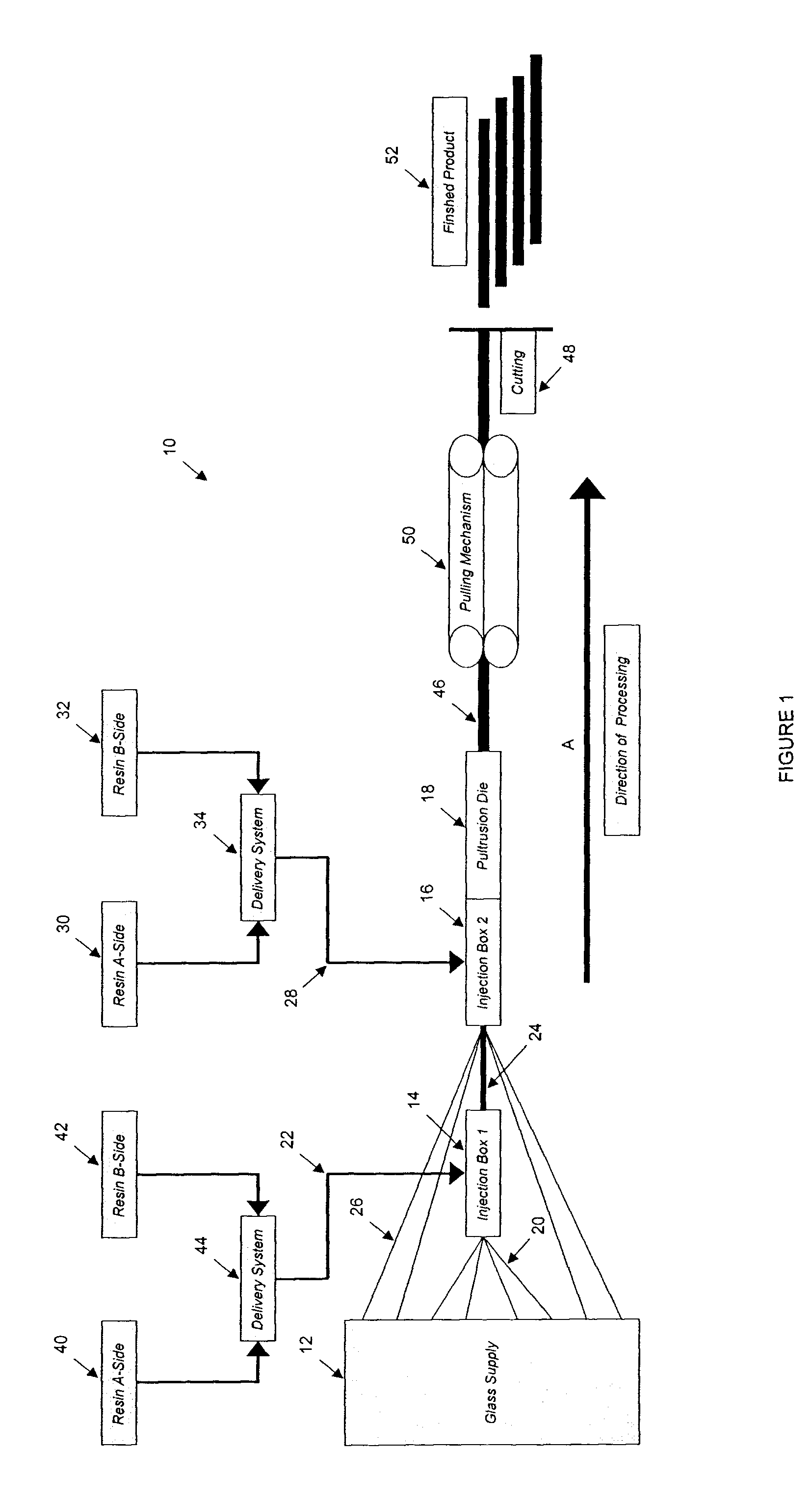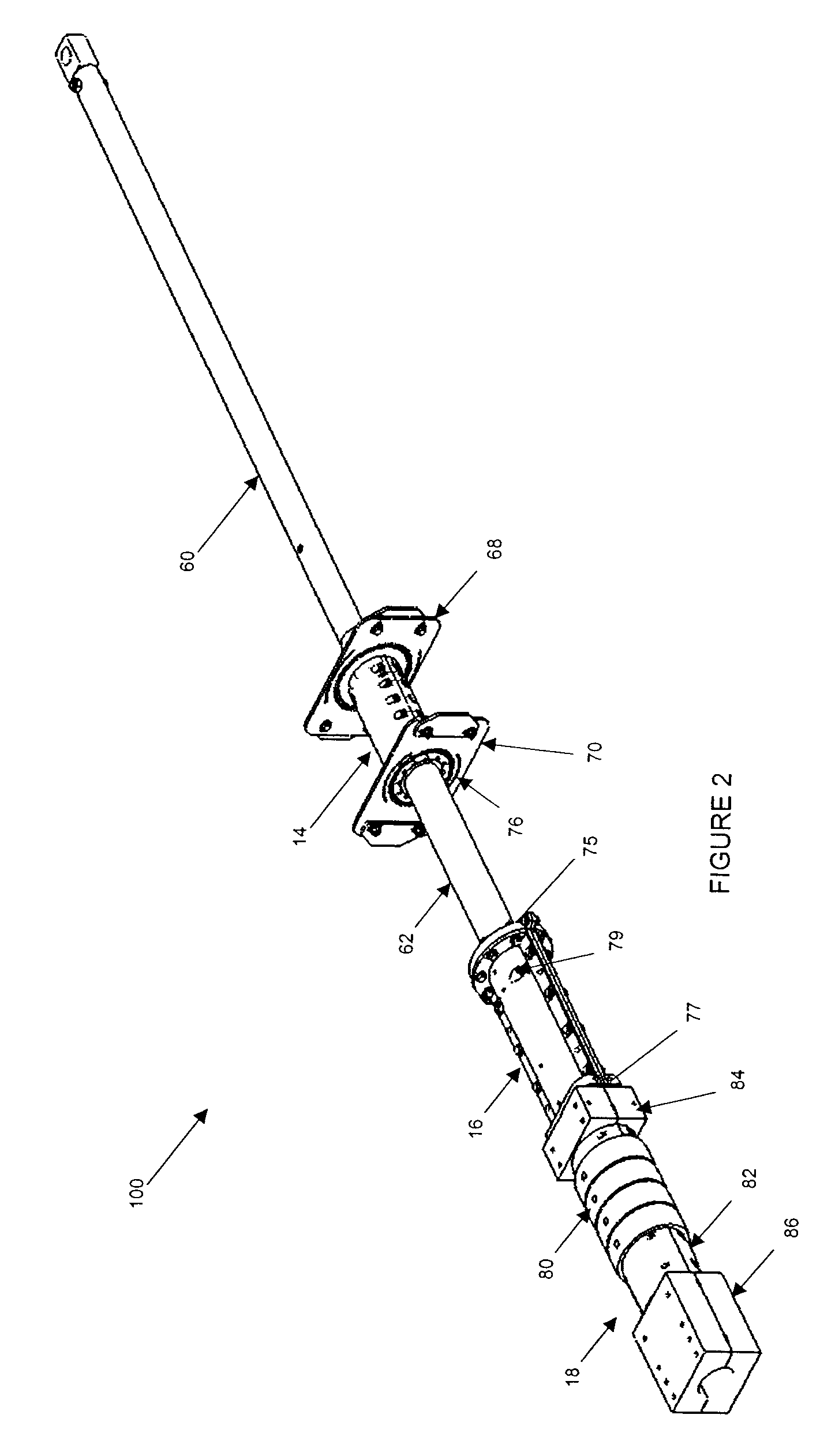Method of Pultrusion Employing Multiple Resins
a technology of pultrusion and resins, applied in the field of pultrusion using multiple resins, can solve the problems of weakened resin properties of composite materials, weakened resin properties of aromatic isocyanate composite materials, and prone to yellowing on exposure to ultraviolet radiation, etc., to achieve the effect of maintaining strength and durability, cost of pultruded composite articles, and thickness of each reinforcement layer
- Summary
- Abstract
- Description
- Claims
- Application Information
AI Technical Summary
Benefits of technology
Problems solved by technology
Method used
Image
Examples
examples
[0110]In the Examples that follow all percentages given are percentages by weight unless indicated otherwise.
[0111]The following materials were used in the Examples:
POLYISOCYANATE A: A HDI Hexane, 1,6-diisocyanato-, homopolymer polyisocyanate having an NCO content of 23% and a viscosity ranging between 900-1500 cps, which is commercially available from Rhodia under the name Tolonate HDT-LV™
POLYISOCYANATE B: A HDI Hexane, 1,6-diisocyanato-, homopolymer polyisocyanate having an NCO content of 23% and a viscosity ranging between 450-750 cps, which is commercially available from Rhodia under the name Tolonate HDT-LV2 ™
POLYISOCYANATE C: A mixture of polyisocyanate, polymeric hexamethylene diisocyanate, and less than 5% monomeric 1, 6 Hexamethylene Diidocyanate based Polyisocyanate, having an NCO content of 23% and a viscosity of about 1200 cps, which is commercially available from Bayer material Science LLC under the name of Desmodur N3600™.
POLYISOCYANATE D: A polymeric MDI, Polymethylen...
PUM
| Property | Measurement | Unit |
|---|---|---|
| weight percent | aaaaa | aaaaa |
| weight percent | aaaaa | aaaaa |
| weight percent | aaaaa | aaaaa |
Abstract
Description
Claims
Application Information
 Login to View More
Login to View More - R&D
- Intellectual Property
- Life Sciences
- Materials
- Tech Scout
- Unparalleled Data Quality
- Higher Quality Content
- 60% Fewer Hallucinations
Browse by: Latest US Patents, China's latest patents, Technical Efficacy Thesaurus, Application Domain, Technology Topic, Popular Technical Reports.
© 2025 PatSnap. All rights reserved.Legal|Privacy policy|Modern Slavery Act Transparency Statement|Sitemap|About US| Contact US: help@patsnap.com



